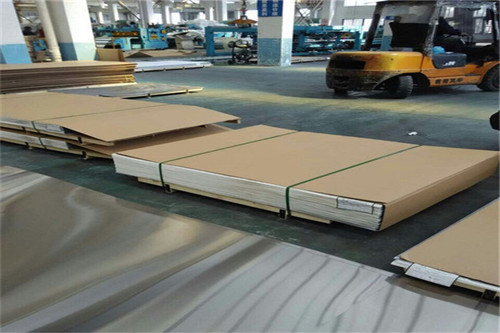
| 3/16" | 1/4" | 5/16" | 3/8" | 7/16" | 1/2" |
|---|---|---|---|---|---|
| 4.8mm | 6.3mm | 7.9mm | 9.5mm | 11.1mm | 12.7mm |
| 9/16"" | 5/8"" | 3/4"" | 7/8"" | 1"" | 1 1/8"" |
| 4.8mm | 15.9mm | 19mm | 22.2mm | 25.4mm | 28.6mm |
| 1 1/4"" | 1 3/8"" | 1 1/2"" | 1 5/8"" | 1 3/4"" | 2"" |
| 31.8mm | 34.9mm | 38.1mm | 41.3mm | 44.5mm | 50.8mm |
| 2 1/4"" | 2 1/2"" | 2 3/4"" | 3"" | 3 1/4"" | 3 1/2"" |
| 57.2mm | 63.5mm | 69.9mm | 76.2mm | 82.6mm | 88.9mm |
| 3 3/4"" | 4"" | 4 1/4"" | 4 1/2"" | 4 3/4"" | 5"" |
| 95.3mm | 101.6mm | 108mm | 114.3mm | 120.7mm | 127mm |
| 5 1/4"" | 5 1/2"" | 5 3/4"" | 6"" | ||
| 133.4mm | 139.7mm | 146.1mm | 152.4mm |
Alloy 304/304H (UNS S30400/ S30409) is a modification of the most widely utilized "18-8" chromium-nickel austenitic stainless steel. The carbon content is controlled in the range of 0.04-0.10% for increased strength at temperatures above 800°F (427°C). It is an economical and versatile corrosion resistant alloy suitable for a wide range of general purpose applications.
It is common practice for 304H to be dual certified as 304 and 304H. The high carbon chemistry of 304H enables 304 to meet the mechanical properties and grain size requirements of 304H.
Alloy 304/304H has general corrosion resistance similar to 304/304L. It resists atmospheric corrosion, as well as, moderately oxidizing and reducing environments. However, because of its high carbon content, Alloy 304/304H is subject to carbide precipitation in the heat affected zone of welds.
Alloy 304/304H is non-magnetic in the annealed condition, but can become slightly magnetic as a result of cold working or welding. It can be easily welded and processed by standard shop fabrication practices.
Applications
Chemical and Petrochemical Processing-pressure vessels, tanks, heat exchangers, piping systems, flanges, fittings, valves and pumps
Petroleum Refining
Standards
ASTM.......................... A 240
ASME.......................... SA 240
AMS ........................... 5513
QQ-S .......................... 766
Corrosion Resistance
Alloy 304/304H has good resistance to atmospheric corrosion, foods and beverages and to many organic and inorganic chemicals in moderately oxidizing to moderately reducing environments. The high chromium content of the alloy provides resistance to oxidizing solutions such as nitric acid up to 55% weight and up to 176°F (80°C).
Alloy 304/304H also resists moderately aggressive organic acids such as acetic. The nickel present in the alloy provides resistance to moderately reducing solutions such as pure phosphoric acid, whatever the concentration, in cold solutions and up to 10% diluted hot solutions. The alloy can also operate successfully in caustic solutions free of chlorides or fluorides at moderate temperatures.
Alloy 304/304H does not perform well in more highly reducing environments such as those containing chlorides and sulfuric acid.
Alloy 304/304H performs well in fresh water service with low levels of chlorides (less than 100ppm). At higher chloride levels the grade is susceptible to crevice corrosion and pitting. For successful performance under these more severe conditions, higher molybdenum content is need such as 316/316L. Alloy 304/304H is not recommended for service in marine environments.
In most instances, the corrosion resistance of Alloys 304, 304L and 30H will be roughly equal in most corrosive environments. However, in environments that are sufficiently corrosive to cause intergranular corrosion of welds and heat-affected zones Alloy 304L should be used because of its low carbon content.